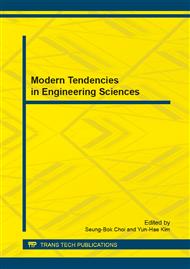[1]
Rural construction Department of Housing and ministry of urban-rural development. Guideline training materials of appraisal technology of rural dangerous building[M]. Beijing: China building industry press, (2009).
Google Scholar
[2]
Zheng Shiju, Jiang Lixue, Lu Weijie. Status survey and analysis on typical rural residential construction in jiangnan region[C]. The 10th national building appraisal and strengthening academic conference proceedings, 2010. 59-64.
Google Scholar
[3]
Liang Yang, Dong Hong. 11th five-year plan, national supporting major projects research topic-Status survey and research report on rural residential construction in China[J]. Construction science and technology. 2011(03).
Google Scholar
[4]
Wang Kai, Xu Song, Xian Jinghong. Applied research on rural house roofing materials[J]. Architectural technology at low temperature, 2011. 11.
Google Scholar
[5]
Wang Baomin, Miao Huimin, Li Jing. Application of the Thermal Insulation Roofing in Villages and Small Towns of Our Country[J]. Research & Application of Building Materials, 2008. 5.
Google Scholar
[6]
Wang Xiaohong, Zhai Aimei, Wang Xuefeng. Method for multiple-parameters evaluation modified by DEA model[J]. Journal of Harbin Institute of Technology, 2009, 9(8): 103-106.
Google Scholar
[7]
Zhang Yi, Wang Xianjia. Study on Evaluation Method for Investment Project Based on DEA and Fuzzy Theory[J]. Technology economics, 2010, 29(2): 64-80.
Google Scholar
[8]
Xing Huige, Wang Zhuofu, Yin Honglian. Methods of ranking decision making units based on DEA. [J]. Systems of engineering and electronics, 2009, 11(31): 2648-2651.
Google Scholar
[9]
Song Malin,Wu Jie,Wang Yumei.An extended aggregated ratio analysis in DEA[J]. Journal of Systems Science and Systems Engineering, 2011(2): 249-256.
DOI: 10.1007/s11518-011-5162-1
Google Scholar
[10]
Liang L,Li Y J,Li S B. Inereasing the dlseriminato power of DEA in the presence of the undesirable output sand large dimensionality of data sets with PCA[J]. Expert Systems with APP Lieatiolis, 2009, 36(3): 5895-5899.
DOI: 10.1016/j.eswa.2008.07.022
Google Scholar
[11]
Pasupathy K S. Modeling undesirable outputs in data envelopment analysis: various approaches, the degree of master of science in industrial and systems engineering[J]. The Faculty of the Virginia Polytechnic Institute and State University,2002(3) : 244-251.
Google Scholar


